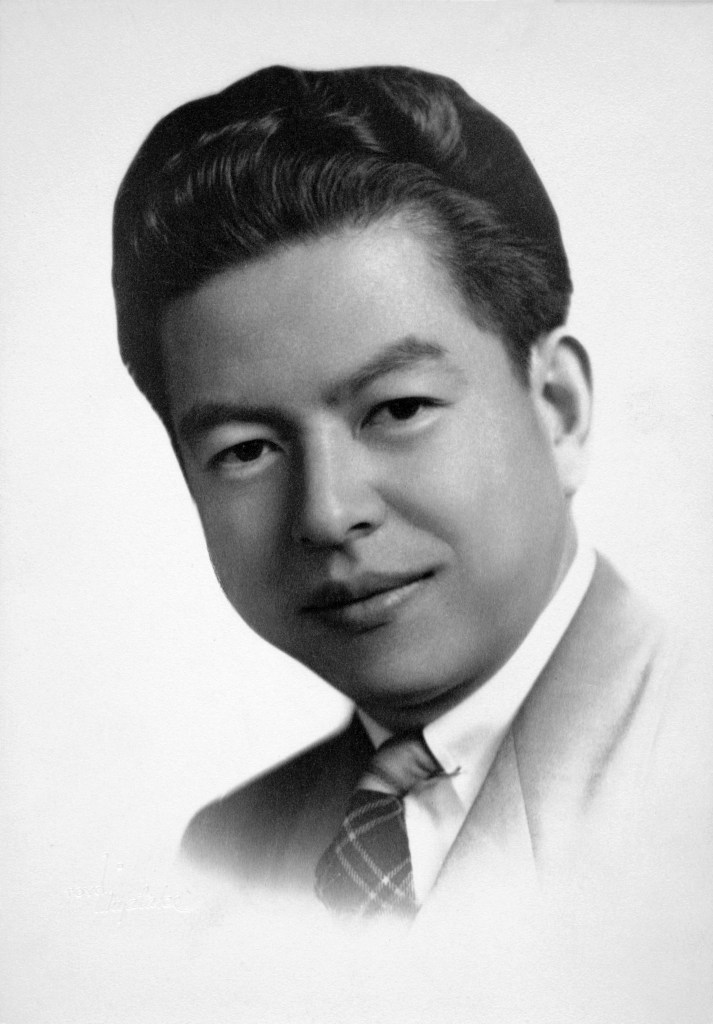Daughter of interned Athens teacher welcomed to his former home
Published 1:00 pm Friday, February 21, 2020

- Tsuyoshi Matsumoto
On Monday, Dec. 8, 1941, Japanese-born Tsuyoshi Matsumoto, a music teacher at Trinity School, went for a walk in Athens and never returned.
It was the morning after the Japanese attack on Pearl Harbor that thrust America into World War II. That week’s Limestone Democrat, predecessor to The News Courier, featured the top story: “Japanese Alien, Said ‘Dangerous,’ Seized in Athens.”
Trending
Nearly eight decades later, Matsumoto’s daughter, Helen Kagan, received a much different welcome in Athens. Tuesday marked her first visit to the community that her father spent much of his life trying to leave behind.
Kagan and her husband Ron Kagan, who live in San Diego, spent the day in Athens learning more about the city and sharing stories about the life her father had before and after he was taken. Local and FBI authorities arrested and interned him for two months during a period of heightened fear and discrimination against Japanese Americans following the Pearl Harbor attack.
“From his days, I learned that there was quite a bit of racial discrimination, but things have really evolved since then and so I see everything seems to be integrated now, although there aren’t very many Asians here still,” Kagan said.
The Kagans, along with Carol Strom, daughter of then–Trinity Principal Jay Wright, met with members of the Athens-Limestone Community Association to view historic records and learn about Tsuyoshi Matsumoto at the Limestone County Archives.
They also toured the sites of the school where her father taught. ALCA operates the former Trinity School as a community center. Helen Kagan will help plan an exhibit this coming fall at the Athens-Limestone Public Library that features Matsumoto’s story alongside a Smithsonian exhibit about World War II Japanese internment camps in America.
“I just wanted to learn some of the things that he experienced and meet some of the people who were very kind to him and helped him in spite of the other people in the community who were anti-Japanese,” Kagan said. “There was a real pocket of people here who were very open to welcoming him, and even though he was a complete stranger here and there were no other Asian people around, they were very supportive of him.”
Trending
Kagan said her father never talked about his time in Athens, and she came to realize it was a dark period in a life that took him all over the map. Matsumoto arrived to America as a student, then stayed as a teacher and a U.S. liaison, ultimately landing in La Jolla, California. There, he became a world-renowned artist for his sketches of pine trees at the Torrey Pines State Natural Reserve.
Matsumoto had only been living in Athens for 10 weeks when Pearl Harbor was attacked and his life was turned upside down. Wright, who worked with Matsumoto at a seminary in New York, had hired him to teach music for the 1941-42 school year at Trinity, the only high school for African Americans in Limestone County at the time.
After local and FBI agents arrested Matsumoto at the Trinity teachers’ home, he was held in the Limestone County Jail for two days before being detained at Fort McClellan for two months. He was at first kept in solitary confinement, where other Alabama residents of German and Japanese descent were kept. Federal authorities eventually determined the 33-year-old, 5-foot-4, 128-pound Matsumoto was not a dangerous spy and released him back to Athens.
However, local sentiment was not as trusting.
“The Enemy is Living with Us,” said the headline on an Alabama Courier editorial, also a predecessor to The New Courier, on Feb. 26, 1942. The scathing opinion piece called Matsumoto a “Yellow Slant-Eyes” and Japanese people “little yellow devils” who were bent on destruction.
“For the last several months, a Jap alien has lived in Athens. You didn’t know that, did you?” the editorial said. “He’s never seen by the general public. And yet he’s living under the very shadow of the courthouse.”
The editorial ended with the final word: “Once a Jap, always a Jap.”
Strom said the local reaction to Matsumoto’s return panicked her parents, who quickly made arrangements to find him a job and a place to live elsewhere for his safety. From Athens, he went on to become a United States citizen and served 20 years in the U.S. Navy as a liaison in Japan.
But his heart was in the arts. He opened a gallery in New York City in 1968, but after a few years started looking for elsewhere to move. It was on a visit to California that Matsumoto, whose name means “root of the pine tree,” saw and fell in love with the Torrey Pines. He moved to La Jolla, and from then until his death in 1982, he often could be found on the reserve, filling a sketchbook with one of his 800 “studies of the pine.”
On Tuesday, Kagan said it was an honor to have her father’s story remembered and recognized with the upcoming exhibit at the library.
“I think it’s a wonderful way to show that we need to think of people as individuals and not see them all as a group, as a stereotype, because my father was definitely a very unique person,” said Kagan. She noted he was a pacifist and Christian who was surrounded by like-minded friends at Trinity. “But once he left that small circle of friends, he discovered that the rest of the community was very hostile to him without even knowing who he was, so it’s a great lesson for the rest of the world to see that we shouldn’t treat people with stereotypes.”





